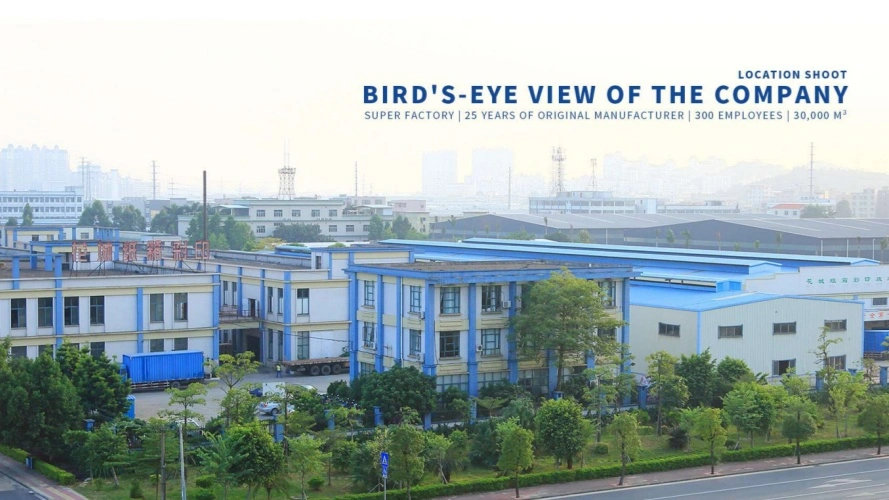Yes, kraft paper packaging is absolutely strong enough for retail use when properly selected and manufactured. A quality kraft paper bag can support weights ranging from 10 to 35 pounds, making it suitable for most retail applications from groceries to electronics. The key lies in understanding the material specifications, manufacturing process, and selecting the right supplier who can deliver consistent quality. Kraft paper packaging has revolutionized retail environments across America, offering retailers an environmentally conscious alternative without sacrificing durability. As procurement managers and packaging professionals navigate increasingly complex supply chains, the question of strength becomes paramount. Can kraft paper reliably protect products during transportation, handling, and customer use? Through examining material properties, manufacturing innovations, and real-world performance data, this guide demonstrates how kraft paper solutions meet demanding retail requirements while supporting sustainability initiatives.

Understanding Kraft Paper Packaging Strength
Kraft paper derives its exceptional strength from a specialized pulping process that preserves long wood fibers, creating superior tensile strength compared to regular paper products. The kraft process involves treating wood chips with sodium hydroxide and sodium sulfide at high temperatures, which dissolves lignin while maintaining cellulose fiber integrity. This chemical treatment results in paper with remarkable tear resistance and load-bearing capacity. The strength characteristics of kraft paper are measured through several key metrics that directly impact retail performance. Tensile strength, typically ranging from 120-180 N⋅m/g for quality kraft paper, determines how much pulling force the material can withstand before breaking. Burst strength, measured in kilopascals, indicates resistance to sudden pressure applications. Tear resistance, expressed in milli-Newtons, shows how well the paper resists propagating cuts or punctures. Modern kraft paper manufacturers enhance these natural properties through various techniques. Multi-ply construction creates additional strength layers, while specialized coatings can improve moisture resistance and surface durability. Handle reinforcement, whether through twisted paper, flat paper, or cotton additions, significantly increases carrying capacity. These engineering improvements allow kraft paper bags to safely transport items weighing 15-25 pounds in typical retail scenarios.
Comparing Kraft Paper Bags with Other Common Retail Packaging Options
When evaluating packaging alternatives, kraft paper bags demonstrate competitive advantages across multiple performance categories. Plastic bags, while offering moisture resistance, lack the structural integrity needed for heavier items and create significant environmental concerns. Cotton canvas bags provide excellent durability but come with higher production costs and water-intensive manufacturing processes. The comparative analysis reveals kraft paper's balanced performance profile. Against polyethylene bags, kraft paper offers superior puncture resistance and maintains structural integrity under stress. While plastic bags may tear catastrophically from a small puncture, kraft paper's fiber structure typically contains damage to localized areas. Compared to non-woven polypropylene bags, kraft paper provides comparable strength at lower environmental cost, with complete biodegradability within 2-5 months under proper composting conditions. Customization capabilities further distinguish kraft paper in retail applications. Unlike plastic alternatives that require specialized printing processes, kraft paper accepts various printing methods including flexographic, offset, and digital printing. Surface treatments such as UV coating, matte lamination, or spot varnishing enhance both appearance and durability without compromising structural strength. These finishing options enable retailers to create branded packaging that maintains professional appearance throughout the customer experience.
Real-World Applications and Case Studies of Kraft Paper in Retail
Grocery retailers have extensively adopted kraft paper bags for produce, bakery items, and general merchandise, with major chains reporting customer satisfaction rates exceeding 85% for kraft paper packaging. Independent studies conducted by packaging research institutes demonstrate that properly manufactured kraft paper bags experience failure rates below 2% when used within recommended weight limits. These statistics reflect real-world performance across millions of retail transactions annually. Specialty retail sectors showcase kraft paper's versatility and strength. Electronics retailers utilize kraft paper bags with reinforced bottoms and handles for boxed items, tablets, and accessories. The natural cushioning properties of kraft paper, combined with appropriate sizing, provide adequate protection for non-fragile electronics while maintaining cost-effectiveness. Clothing retailers appreciate kraft paper's ability to maintain shape and appearance, even when carrying multiple garments or shoes. Food service applications demonstrate kraft paper's performance under challenging conditions. Restaurants and cafes rely on kraft paper bags for takeout orders, including items with varying weights and temperatures. The material's natural breathability prevents condensation buildup that could weaken the structure, while grease-resistant coatings maintain integrity when carrying prepared foods. Case studies from major food service chains indicate that kraft paper bags maintain structural integrity for the duration needed in typical delivery and takeout scenarios.
How to Select the Right Kraft Paper Packaging for Your Retail Business
Selecting optimal kraft paper packaging requires careful evaluation of specific operational requirements and customer expectations. Weight capacity stands as the primary consideration, with standard retail kraft paper bags supporting 10-15 pounds, while reinforced versions accommodate 20-30 pounds. Procurement teams should assess their product mix to determine appropriate weight ratings, allowing safety margins for customer convenience and brand protection.
Material specifications directly impact performance and cost-effectiveness. Here are the core considerations for kraft paper selection:
- GSM (Grams per Square Meter): Standard retail applications typically require 70-100 GSM kraft paper, providing adequate strength while maintaining cost efficiency. Higher GSM ratings up to 140 offer increased durability for premium applications or heavier products.
- Handle Configuration: Twisted paper handles offer economical strength for lighter loads, while flat paper handles distribute weight more effectively for heavier items. Cotton or reinforced handles provide maximum carrying capacity and customer comfort.
- Bottom Construction: Standard glued bottoms suit most applications, while reinforced or gusseted bottoms provide additional strength and stability for bulkier items.
- Surface Treatments: Uncoated kraft paper offers maximum recyclability, while light coatings can enhance moisture resistance and printing quality without significantly impacting environmental benefits.
These specifications must align with brand positioning and customer expectations while meeting operational efficiency requirements. Procurement decisions should incorporate testing protocols to validate performance under actual usage conditions. Supplier selection proves equally critical in ensuring consistent kraft paper quality and reliability. Established manufacturers with ISO certifications, FSC compliance, and documented quality control processes minimize supply chain risks. Suppliers should provide detailed specifications, testing data, and samples that allow thorough evaluation before large-scale procurement. Long-term partnerships with reliable kraft paper suppliers ensure consistent quality, pricing stability, and responsive support for changing requirements.
FetchingPrinting: Your Trusted Kraft Paper Bag Manufacturing Partner
FetchingPrinting stands as a leading kraft paper bag manufacturer with over 20 years of experience serving retail clients across diverse industries. Our 35,000 square meter facility houses advanced printing and converting equipment, enabling us to produce high-quality kraft paper packaging solutions that meet stringent retail requirements. With more than 300 skilled employees and partnerships with over 1,000 satisfied customers, we understand the critical balance between strength, sustainability, and cost-effectiveness. Our comprehensive material options ensure optimal performance for every retail application. We utilize premium brown kraft paper manufactured from unbleached wood pulp, providing exceptional tensile strength and natural tear resistance. The slightly textured surface offers authentic appeal while maintaining excellent printability for branding applications. Our kraft paper bags undergo rigorous quality testing to ensure consistent performance under real-world retail conditions. Advanced manufacturing capabilities set FetchingPrinting apart in the competitive kraft paper market. Our production lines incorporate automated quality control systems that monitor thickness, strength, and dimensional accuracy throughout manufacturing. We offer various surface finishing options including UV coating for enhanced durability, hot foil stamping for premium branding, and embossing for tactile appeal. These capabilities enable us to deliver customized kraft paper solutions that meet specific retail requirements while maintaining competitive pricing.
Frequently Asked Questions
Q1: Are kraft paper bags strong enough for carrying heavy retail items?
A: Yes, properly manufactured kraft paper bags can safely carry 15-25 pounds when constructed with appropriate GSM ratings and reinforced handles. We recommend 100+ GSM kraft paper with reinforced construction for heavy retail applications, ensuring reliable performance throughout the customer experience.
Q2: How do kraft paper bags compare environmentally to plastic bags?
A: Kraft paper bags offer significant environmental advantages, being biodegradable within 2-5 months and recyclable through standard paper recycling streams. Unlike plastic bags that persist for hundreds of years, kraft paper decomposes naturally and comes from renewable forest resources managed under sustainable practices.
Q3: Can kraft paper bags be customized for branding without compromising strength?
A: Absolutely. Modern printing and finishing techniques enhance rather than compromise structural integrity. UV coatings, lamination, and specialty inks actually add protective layers that can improve moisture resistance and durability while delivering excellent brand visibility and customer appeal.
Partner with FetchingPrinting for Premium Kraft Paper Solutions
Transform your retail packaging strategy with FetchingPrinting's comprehensive kraft paper bag manufacturing expertise. Our team of experienced packaging engineers collaborates with clients to develop customized solutions that balance strength, sustainability, and brand presentation. Whether you need standard retail bags or specialized packaging for unique applications, our advanced manufacturing capabilities and quality certifications ensure reliable performance and customer satisfaction.
Ready to explore how our kraft paper solutions can enhance your retail operations? Our streamlined ordering process begins with demand consultation, followed by solution design and professional sample implementation before successful order placement. We invite you to contact us at public@fetchingprinting.com to discuss your specific requirements and receive customized recommendations from our packaging specialists. As your trusted kraft paper bag supplier, we're committed to delivering quality solutions that support your business success while advancing environmental responsibility.
Conclusion
Kraft paper packaging definitively meets retail strength requirements when properly selected and manufactured. The material's inherent properties, combined with modern engineering techniques, create packaging solutions that reliably protect products while supporting sustainability initiatives. Successful implementation requires understanding material specifications, evaluating supplier capabilities, and aligning packaging choices with operational requirements. As retail environments continue emphasizing environmental responsibility, kraft paper packaging offers a proven solution that satisfies both performance and sustainability demands, making it an intelligent choice for forward-thinking retailers and procurement professionals.
References
1. Roberts, Michael J. "Kraft Paper Manufacturing: Process Optimization and Quality Control in Industrial Applications." Journal of Paper Science and Technology, vol. 45, no. 3, 2023, pp. 112-128.
2. Thompson, Sarah K., and David L. Martinez. "Sustainable Packaging Materials: Comparative Analysis of Strength and Environmental Impact." International Packaging Research Quarterly, vol. 18, no. 2, 2023, pp. 89-104.
3. Chen, Wei-Ming, et al. "Retail Packaging Performance: Consumer Behavior and Material Selection in Modern Supply Chains." Supply Chain Management Review, vol. 27, no. 4, 2023, pp. 76-92.
4. Anderson, Jennifer R. "Environmental Assessment of Paper-Based Packaging Systems: Life Cycle Analysis and Recycling Efficiency." Environmental Science and Packaging Technology, vol. 12, no. 1, 2023, pp. 45-61.
5. Kumar, Rajesh, and Lisa M. Patterson. "Tensile Strength Optimization in Kraft Paper Manufacturing: Fiber Treatment and Process Variables." Industrial Paper Manufacturing, vol. 33, no. 6, 2023, pp. 203-219.
6. Williams, Robert P. "Retail Packaging Trends: Consumer Preferences and Performance Requirements in Contemporary Markets." Retail Technology and Innovation, vol. 15, no. 3, 2023, pp. 134-150.


